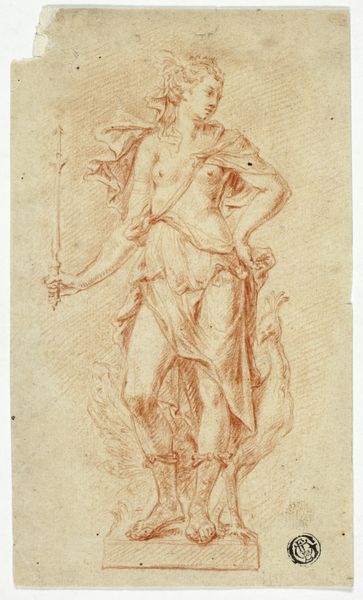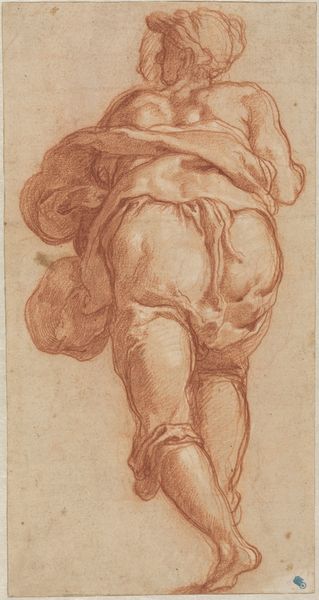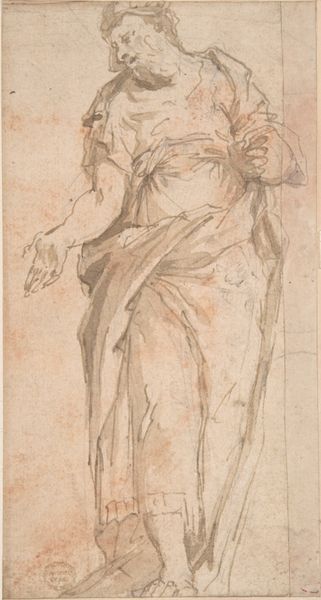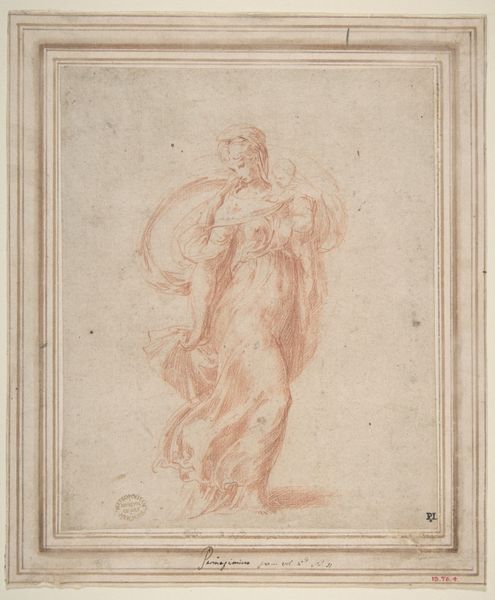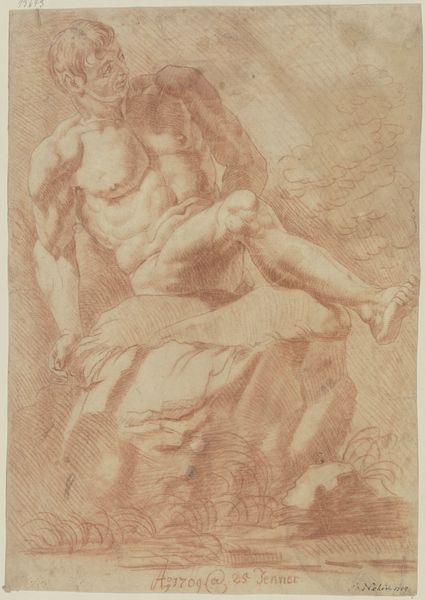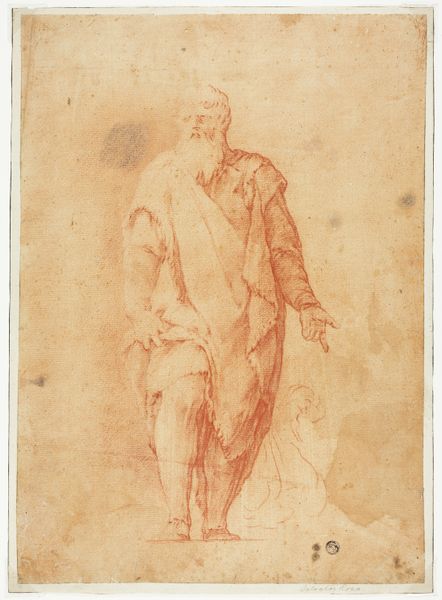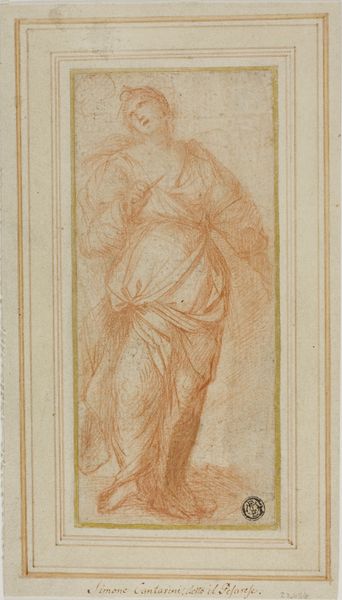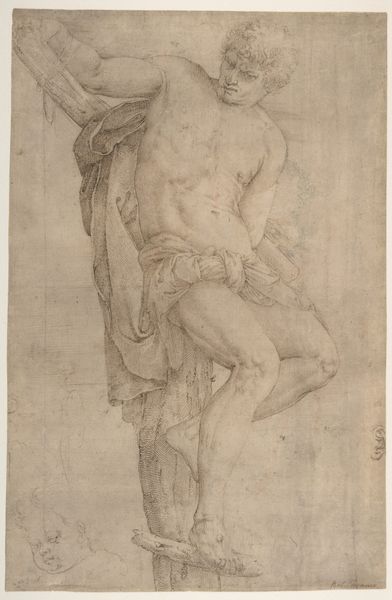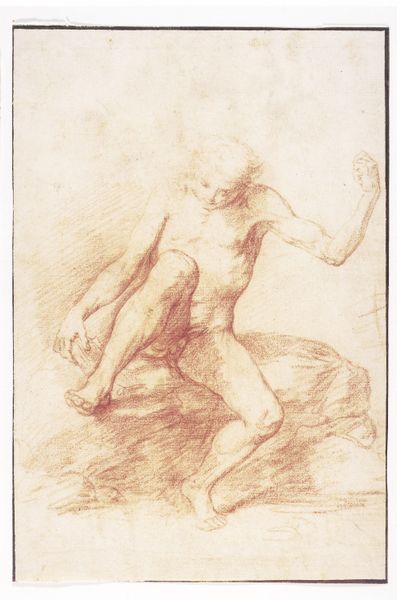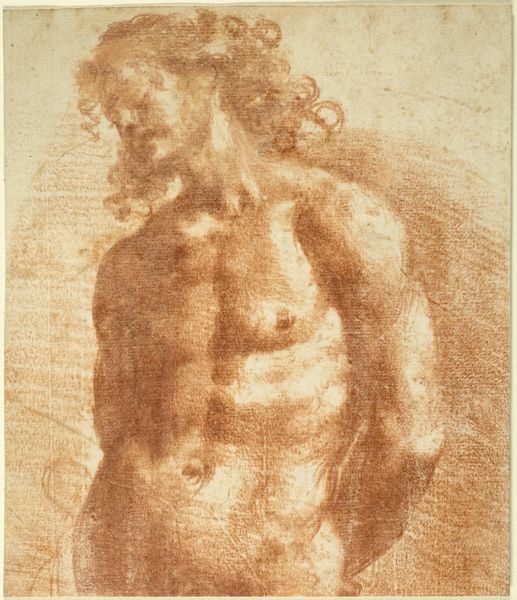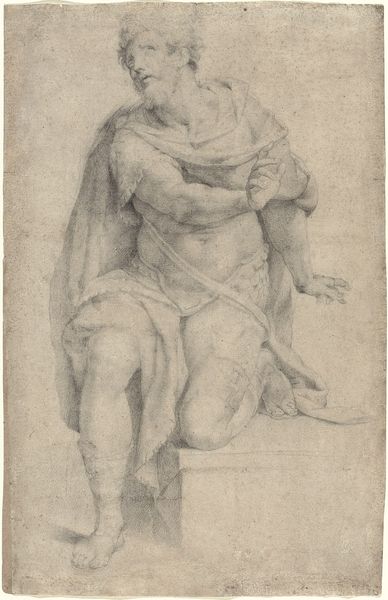
Mary Magdalen, after Algardi's statue in s. Silvestro al Quirinale 1650 - 1653
0:00
0:00
drawing, charcoal
#
portrait
#
drawing
#
baroque
#
charcoal drawing
#
figuration
#
charcoal
#
history-painting
Dimensions: 392 mm (height) x 285 mm (width) (bladmaal)
Editor: This drawing, "Mary Magdalen, after Algardi's statue in s. Silvestro al Quirinale," was made by Luca Giordano between 1650 and 1653, and it's currently at the SMK in Copenhagen. It's a charcoal drawing with a very fluid quality to it. How do you read the dynamic between devotion and perhaps something more fraught in its representation? Curator: This is a beautiful drawing that engages with the representation of female saints within a patriarchal religious framework. Note the way Magdalen's figure is rendered—her partial undress and hand on her breast invite us to contemplate not just her spiritual devotion, but the hypersexualization and scrutiny of female bodies, even within supposedly pious contexts. Does Giordano reinforce existing tropes or attempt to subvert them? Editor: That’s a great point about the potential hypersexualization. Do you see this work, made after Algardi’s sculpture, engaging in a dialogue with other Baroque representations of Mary Magdalene? Curator: Absolutely. Baroque art frequently uses dramatic gestures and emotional displays to connect with viewers. With its visible erasures and reworkings, this drawing opens the door to a discussion around performativity of emotion but also female grief. Considering this was created within the highly structured religious and political climate of 17th-century Italy, how might Giordano be commenting on or complying with societal expectations around female piety and repentance? Editor: So it’s not just a portrait but a commentary on the role women were expected to play. It is interesting that it exists as a drawing, maybe this means it has an investigative quality about it. Curator: Precisely! And think about the accessibility of drawings versus finished sculptures or paintings. Who would have had access to this image? Did it circulate among other artists, influencing their interpretation of the Magdalen? These questions can really illuminate the sociopolitical power structures at play. Editor: I never thought of it in this way before! It makes me want to explore more about women's roles at that time. Curator: Exactly. This drawing invites us to see beyond the surface, and think critically about the complex intersections of religion, gender, and power.
Comments
No comments
Be the first to comment and join the conversation on the ultimate creative platform.
